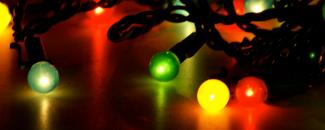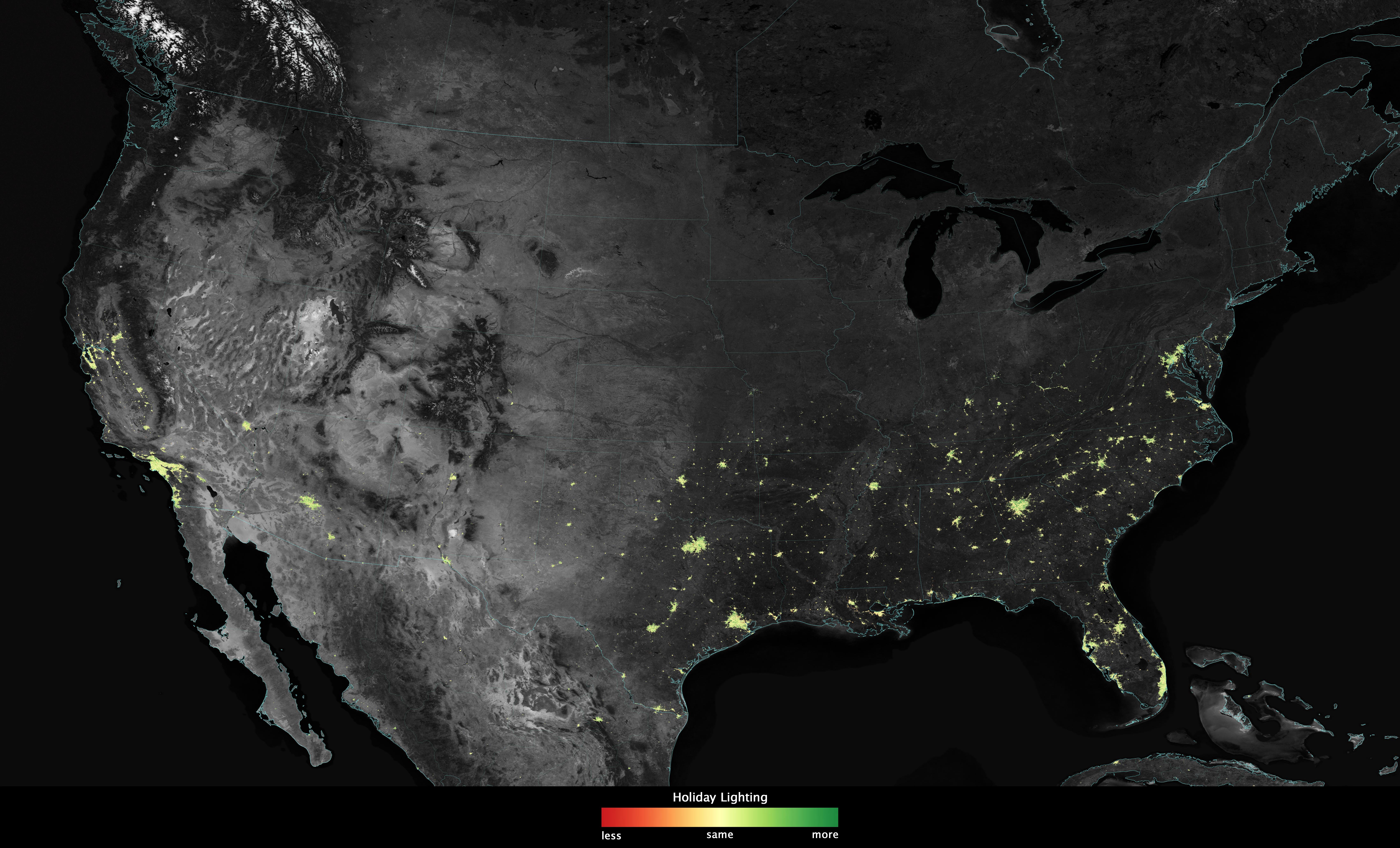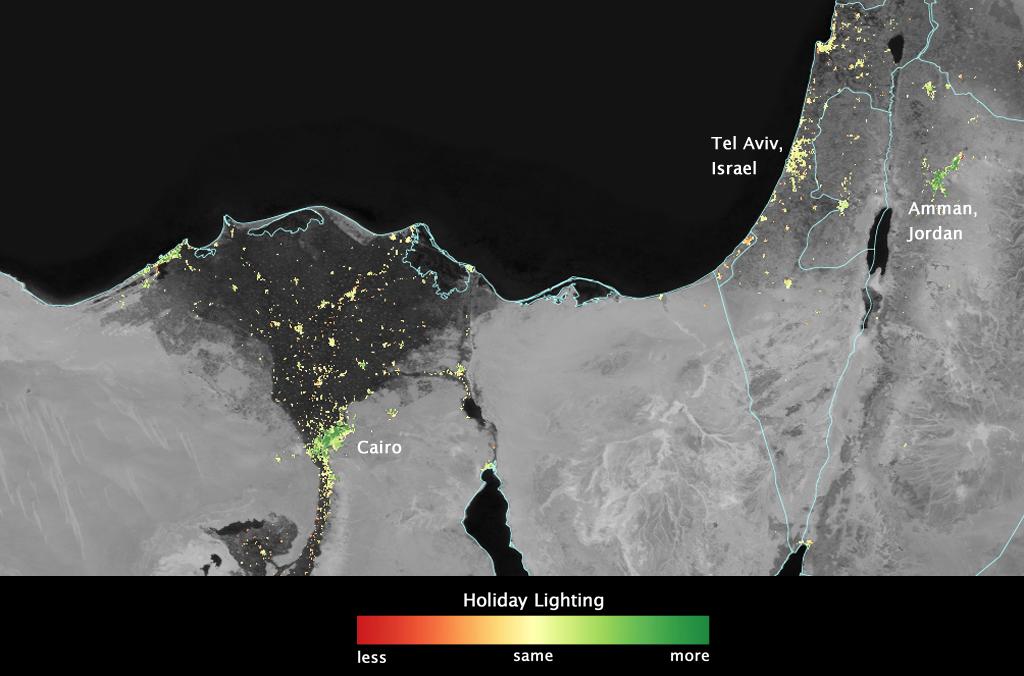
The holidays shine bright—so bright that even satellites take notice. The NOAA/NASA Suomi National Polar-orbiting Partnership, or Suomi NPP, satellite has shown us some unique patterns in nighttime light intensity around the globe during major holiday seasons. In particular, the United States shines exceptionally bright during Christmas and New Year's and the Middle East does so during the holy month of Ramadan.
According to scientists from NASA's Goddard Space Flight Center, nighttime lights in many major U.S. cities shine 20% to 50% brighter during Christmas and New Year's when compared to the rest of the year. Nighttime lights in some Middle Eastern cities shine more than 50% brighter during Ramadan when compared to the rest of the year.
A special instrument called the Visible Infrared Radiometer Suite (VIIRS) resides onboard the Suomi NPP satellite, and it can observe the “dark side” of the planet, detecting the glow of cities and towns as well as gas flares and fires. To determine how the holidays impact nighttime lights, NASA scientists developed an advanced algorithm that analyzes VIIRS data and tracks when and how brightly people illuminate the night.
Christmas and New Year's in the United States
In the United States, nighttime lights typically start getting brighter the day after Thanksgiving, with the trend continuing through New Year's Day. In most suburbs and the outskirts of major cities, light intensity increased by 30% to 50% in 2012 and 2013. Lights in the central urban areas did not increase as much as in the suburbs, but still brightened by 20% to 30% during the same period.
 City lights shine brighter during the holidays in the United States when compared with the rest of the year. Dark green pixels are areas where lights are 50% brighter, or more, during December.
City lights shine brighter during the holidays in the United States when compared with the rest of the year. Dark green pixels are areas where lights are 50% brighter, or more, during December.Credit: NASA's Earth Observatory
Ramadan in the Middle East
In several Middle Eastern cities, nighttime lights brighten during the Muslim holy month of Ramadan. During Ramadan, Muslims fast during the day, delaying meals and many social gatherings, markets, commerce and more to nighttime hours.
Looking at three consecutive years of data, from 2012 through the fall of 2014, the scientists found a large increase in light output in Egypt's capital of Cairo that corresponded with Ramadan. But, not all Middle Eastern cities followed the same pattern as Cairo. Light use in Saudi Arabian cities, such as Riyadh and Jeddah, increased by about 60% to 100% through the month. Light use in Turkish cities, however, increased far less. Some regions in Syria, Iraq, and Lebanon did not have an increase in light output, or even demonstrated a moderate decrease, possibly due to unstable electrical grids or conflict in the region.
 In several cities in the Middle East, city lights brighten during the Muslim holy month of Ramadan. Dark green pixels are areas where the lights are 50% brighter, or more, during Ramadan.
In several cities in the Middle East, city lights brighten during the Muslim holy month of Ramadan. Dark green pixels are areas where the lights are 50% brighter, or more, during Ramadan.Credit: NASA's Earth Observatory
Story adapted from NOAA/NASA Satellite Sees Holiday Lights Brighten Cities.



